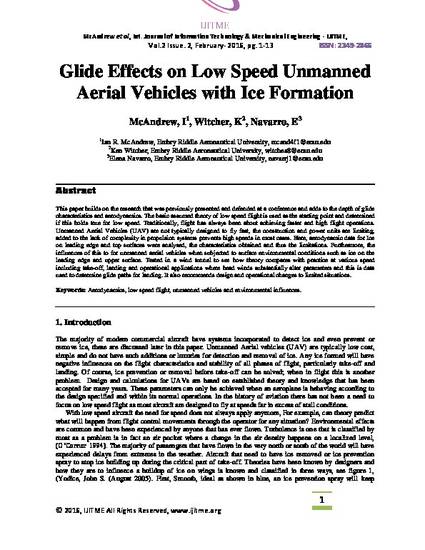
This paper builds on the research that was previously presented and defended at a conference and adds to the depth of glide characteristics and aerodynamics. The basic assumed theory of low speed flight is used as the starting point and determined if this holds true for low speed. Traditionally, flight has always been about achieving faster and high flight operations. Unmanned Aerial Vehicles (UAV) are not typically designed to fly fast, the construction and power units are limiting, added to the lack of complexity in propulsion systems prevents high speeds in most cases. Here, aerodynamic data for Ice on leading edge and top surfaces were analysed, the characteristics obtained and thus the limitations. Furthermore, the influences of this to for unmanned aerial vehicles when subjected to surface environmental conditions such as ice on the leading edge and upper surface. Tested in a wind tunnel to see how theory compares with practice at various speed including take-off, landing and operational applications where head winds substantially alter parameters and this is data used to determine glide paths for landing. It also recommends design and operational changes to limited situations.
Available at: http://works.bepress.com/kenneth-l-witcher/1/
